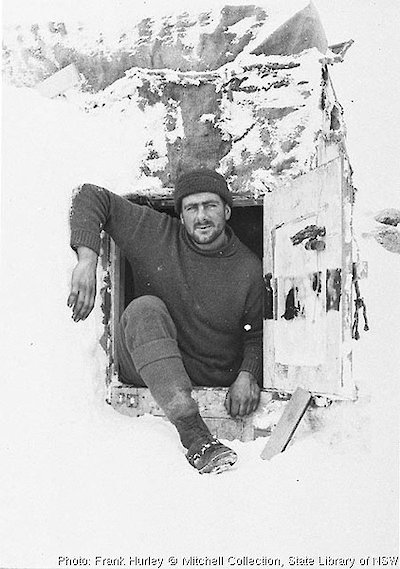Eric Norman Webb
AAE position: Chief magnetician
In their own words
They rounded off that process of school and University which had left me unduly priggish, and which many years of civil life might have failed to correct.
— Webb, ‘Magnetic Pole Journey 1912’, writing in 1965 of his Southern Sledging Party companions Robert Bage and Frank Hurley
Eric Norman Webb, born at Christchurch, New Zealand, in 1889, graduated in civil engineering from Canterbury University. For five months before joining the AAE he worked at the Melbourne Observatory, making magnetic observations for the Carnegie Institute of Washington (United States).
Joining the AAE as chief magnetician and based at Cape Denison, Webb was aware that his records would be heavily scrutinised by physical scientists, since he was for the first time able to record magnetic fluctuations close to the South Magnetic Pole. His careful, diligent work brought praise from Professor Edgeworth David, who remarked that scientists would welcome his ‘splendid series of records’.
During the First World War Webb served with distinction in the British Army, attaining the rank of Major by the end of the war. At the war’s end he turned to hydro-electric engineering with British General Electric, working on hydroelectric schemes around the world. He was a senior engineer on the huge Hamilton Falls Hydro-Electric project in Newfoundland, Canada when he retired in 1959. He died on 23January 1984, the last survivor of the Australasian Antarctic Expedition.

